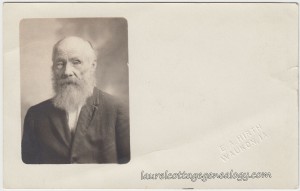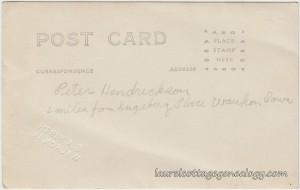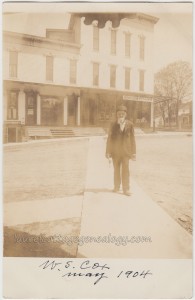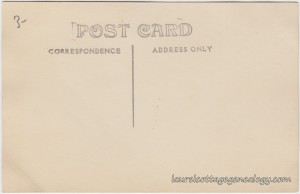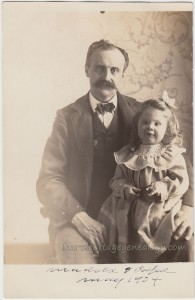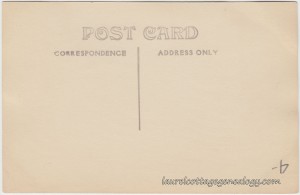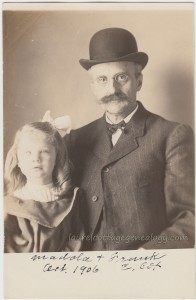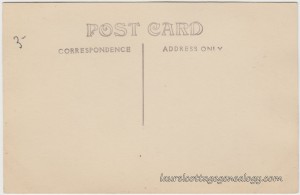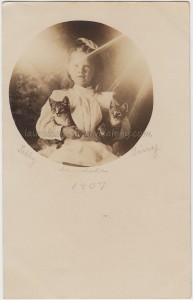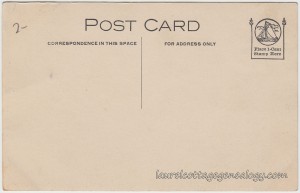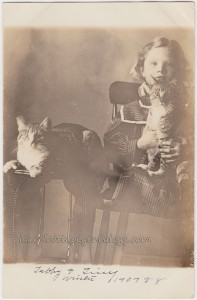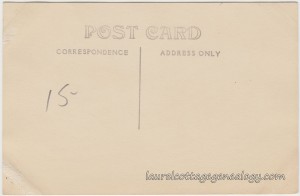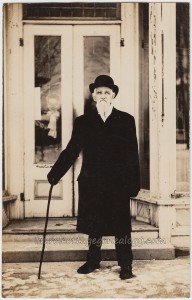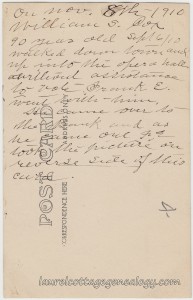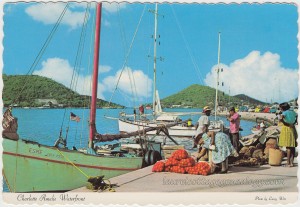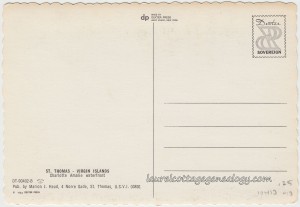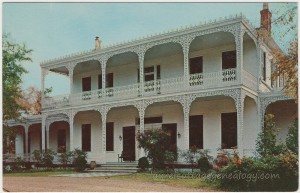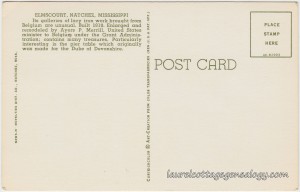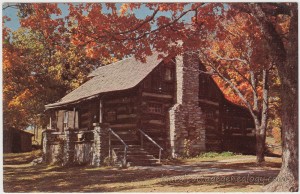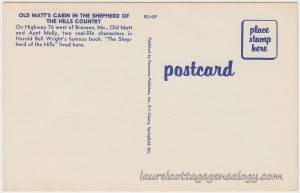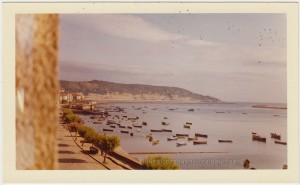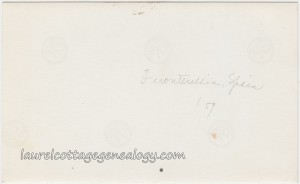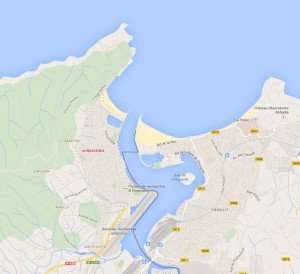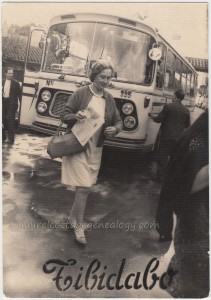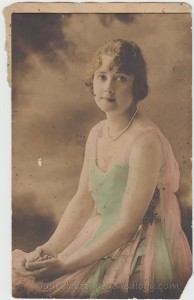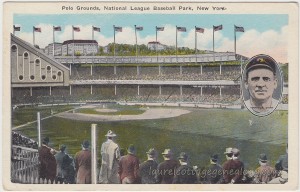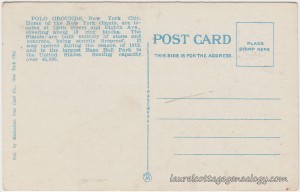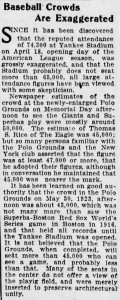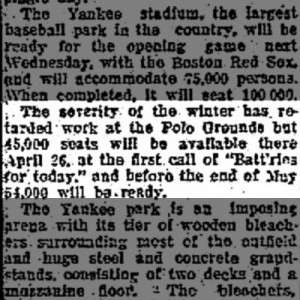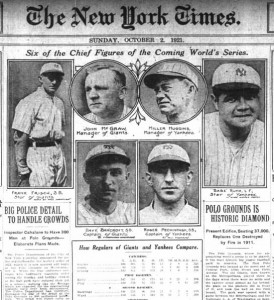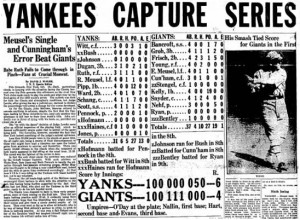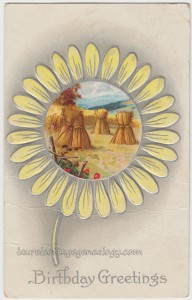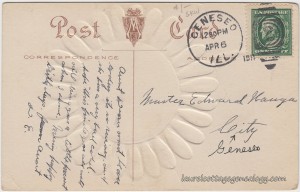A Real Photo Postcard showing a lovely studio photo of an elderly, bearded gentleman with the name and location identified on the back as “Peter Hendreckson, 2 miles from Ingeberg Place Waukon, Iowa.” This one has the photographer’s stamp embossed on the front showing “E. A. Hirth, Waukon, IA.”
The 1915 Iowa State Census shows Peter Hendrickson, age 66, born about 1849 in Norway of Norwegian-born parents; residence Waukon, Allamakee County; religious affiliation Lutheran; married; naturalized U.S. citizen; retired; owns own home or farm worth valued at $2200.00; able to read and write; years in the United States appears to be 38, years in Iowa 37.
Looking further back, on the 1880 Federal Census for Waukon, we find Peter Hendrickson, his wife Carrie, and their young son Henry, three months old, born March 1880, in Iowa. Carrie is approximately the same age as her husband, and also Norwegian born, of Norwegian parents.
The 1900 census for Waukon shows Peter and wife Karen, and two sons, Albert O., age 14 and Peter C., age 6. A daughter, Annie Mary Hendrickson was born about 1881, according to her marriage record to to Ole Severson in 1904. This record shows her mother’s name as Karen Annunson, but is spelled Amunson on son Peter Cornelius Hendrickson’s marriage record to Grace Kvamme (sp?) in 1925. Son Albert O. Hendrickson married Ida B. Vangen in 1915, and on this record mother Karen’s maiden name is spelled Amundson.
Though this particular type of AZO stamp box (two triangles up and two down) is estimated as being used between 1910 – 1930, Peter Hendrickson looks to be at least in his seventies in this photo, but possibly eighties or even early nineties. A Find A Grave entry was found for him which states he was born December 25, 1848 in Gran, Oppland Fylke, Norway, and died 1941 in Winneshiek County, Iowa. I would estimate this photo then between about 1925 – 1941, as it’s possible that the photographer’s studio was using old card stock past the 1930 estimated date for the stamp box.
As for the photographer (nice to have him identified on the card) he is Edgar A. Hirth, born Iowa, about 1876, per the Iowa State Census for Waukon taken in 1915.
Real Photo Postcard, unused with writing. Condition: card has a couple of creases. AZO stamp box. Circa 1925 – 1941.
Price: $15.00
Sources: Ancestry.com. Iowa, State Census Collection, 1836-1925. Original data: Microfilm of Iowa State Censuses, 1856, 1885, 1895, 1905, 1915, 1925 as well various special censuses from 1836-1897 obtained from the State Historical Society of Iowa via Heritage Quest.
Year: 1880; Census Place: Makee, Allamakee, Iowa; Roll: 325; Family History Film: 1254325; Page: 414D; Enumeration District: 013; Image: 0833.
“Iowa, Marriages, 1809-1992,” index, FamilySearch (https://familysearch.org/pal:/MM9.1.1/XJPL-RKG : accessed 12 Oct 2014), Peder Hendrickson in entry for Ole E. Severson and Annie Mary Hendrickson, 11 Feb 1904; citing Waukon, Allamakee Co., Ia., reference 2:3R852JT; FHL microfilm 1479486.
“Iowa, Marriages, 1809-1992,” index, FamilySearch (https://familysearch.org/pal:/MM9.1.1/XJP1-HKF : accessed 12 Oct 2014), Peter Hendrickson in entry for Peter Cornelius Hendrickson and Grace Cornelia Kvamme, 23 Sep 1925; citing Waukon, Allamakee Co., Iowa, reference 2:3WP7ND1; FHL microfilm 1479486.
“Iowa, Marriages, 1809-1992,” index, FamilySearch (https://familysearch.org/pal:/MM9.1.1/XJPZ-3QJ : accessed 12 Oct 2014), Peder Hendrickson in entry for Albert O. Hendrickson and Ida B. Vangen, 05 Jul 1915; citing Waukon, Allamakee, Iowa, reference 2:3JJQBRC; FHL microfilm 1479485.
Peter Hendrickson. Find A Grave Memorial# 100916903. Web accessed October 13, 2014. (Findagrave.com)

